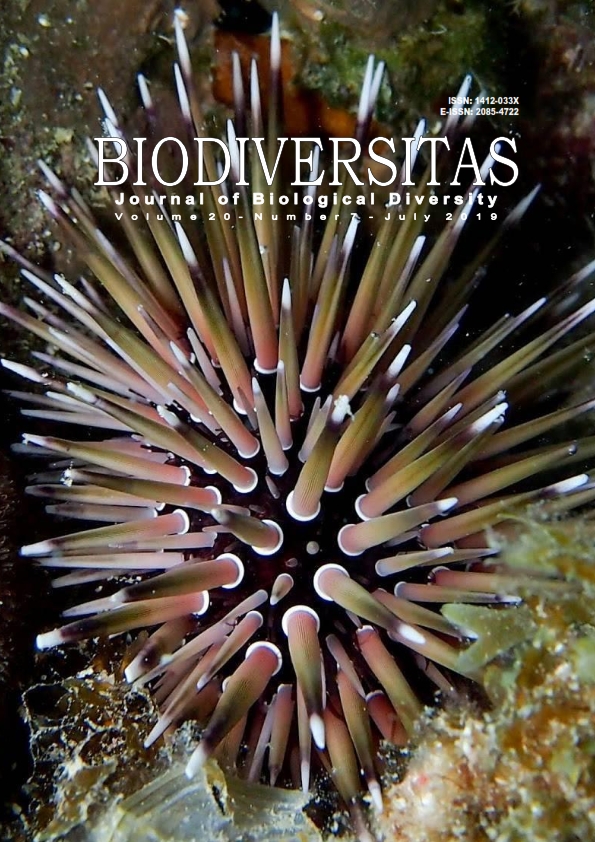Detection of transovarial transmission of dengue virus in Aedes spp. (Diptera: Culicidae) from Brontokusuman Village, Yogyakarta, Indonesia
##plugins.themes.bootstrap3.article.main##
Abstract
Abstract. Windyaraini DH, Marsifah T, Mustangin Y, Poerwanto SH. 2019. Detection of transovarial transmission of dengue virus in Aedes spp. (Diptera: Culicidae) from Brontokusuman Village, Yogyakarta, Indonesia. Biodiversitas 20: 2061-2067. Dengue Hemorrhagic Fever (DHF) is an infectious vector-borne disease. It is caused by dengue virus infection through the vector of Aedes spp. Dengue virus can be transmitted transovarially from infected female mosquitoes to their eggs. The presence of transovarial transmission allows maintenance of serotypes of dengue virus in nature. Detection of transovarial transmissions can be used to predict disease outbreaks as an effort to control the dengue virus. Dengue control is generally carried out through control of dengue vectors (mosquitoes) with environmental management, the use of chemical agents (insecticides) and biological control. This study was conducted to determine the existence of transovarial (vertical) transmission, factors affecting it and the resistance status of Aedes spp. against cypermethrin insecticide (pyrethroid) in Brontokusuman Village, Mergangsan Sub-district of Yogyakarta, Indonesia. The study was conducted from September 2018 to February 2019 with larvae sampling in 100 houses. The adult Aedes spp. mosquitoes were used as the sample of immunohistochemical methods and bioassay to get the mosquito resistance status against cypermethrin. The transovarial transmission of dengue virus in Aedes spp. from Brontokusuman Village was found in 3 of 100 samples of Aedes spp. mosquitoes, and the TTI value (Transovarial Transmission Index) was 3%. The transovarial transmission is influenced by the density of the infected vectors, the condition of their eggs and the number of dengue cases. The bioassay test results showed that the resistance status of Aedes spp. can be presumed resistance against cypermethrin insecticide.
